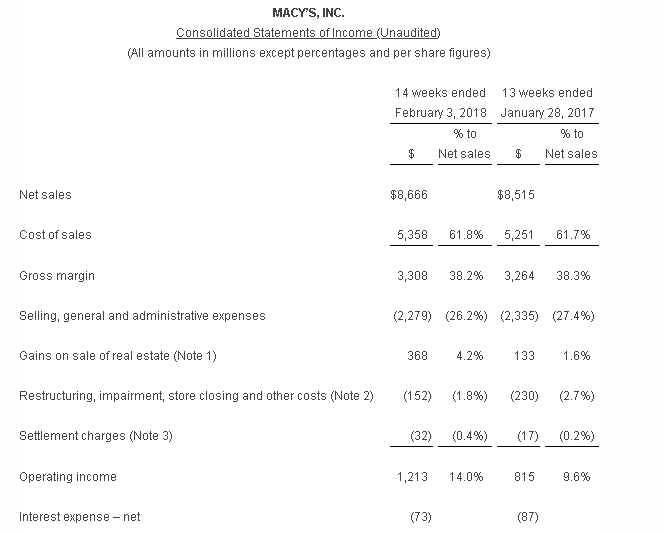Overview of the Company’s Position in the Market
First of all, it is essential to introduce the company and provide an overview of its position in the market. Macy’s is considered to be one of the oldest and most profitable retailers in the United States. According to Hallal-Negishi, the company is a merchandise retailer, operating in the U. S., which provides its customers with men’s, women’s, and children’s clothing apparel as well as accessories, cosmetics, home furnishing, and other consumer goods (para. 1).
Therefore, it should be concluded that Macy’s has a considerably diversified business approach, as it owns two brand-name department stores in the United States, which are considered to among the most popular (Hallal-Negishi para. 1).
Also, with the development of e-commerce and e-shopping, the company strives to expand its influence and revenue from its online retailing shops. Such diversified and considerable large market positioning along with the necessity to maintain the brand’s premium quality and popularity poses significant challenges for Macy’s. However, it is possible to state that they meet these challenges successfully.
Macy’s Financial and Market Measures
Further, it is of high importance to discuss the company’s financial and market measures to provide statistical information about the organization’s performance. One of the most recent and better-organized reports on the financial performance of Macy’s is found on the Business Wire website, in the article “Macy’s, Inc. Reports Fourth Quarter and FY 2017 Earnings and Provides 2018 Guidance.” Here is the consolidated statement of income, retrieved from the article:

It is possible to state that the company’s level of success is evidently shown by these financial measures. The company operates more than 690 department stores in the United States with the estimated number of employees of 130 000 (“Macy’s, Inc. Reports Fourth Quarter”). It should be observed that a company of such level is highly responsible for its decisions on business and corporate-level strategy development.
Current Strategies for Business Level
On the business level, Macy’s implement numerous strategies to improve its efficiency and profitability. One of the most effective customer-oriented strategies, which were implemented by the company, is described by Touryalai. The strategy’s primary goal was to increase and deepen the understanding of the needs and demands of the Macy’s customers in the context of various geographical areas. Through the process of collecting the data about the most demanded products in each particular local store, the company was able to improve its customer service by focusing on delivering specific products to distinct stores. Hallal-Negishi also mentions that Macy’s employs merchandising strategy to remain competitive in the digital marketing sphere.
Current Strategies on Corporate Level
Considering the approaches on the corporate level, it is possible to exemplify Digital Asset Management (DAM) strategy since allows the company to facilitate the interconnections between various units of the organization. According to Hallal-Negishi, communication and linking are among the most important measurement tools for managers, which allows to communicate the company’s overall strategy through its hierarchy and to link it to departmental and individual objectives. The employment of DAM enables Macy’s to rapidly communicate ideas and decisions into the workflow of the company.
Also, another measurement tool should be mentioned. Hallal-Negishi argues that feedback and learning tool is used continuously in the organization, which allows having significant control over the process of overall strategy implementation.
Works Cited
Hallal-Negishi, Scott. (2014). “Macy’s, Inc. The Omnichannel Strategy.” Medium. 2014. Web.
“Macy’s, Inc. Reports Fourth Quarter and FY 2017 Earnings and Provides 2018 Guidance.” Business Wire. 2018. Web.
Touryalai, Halah. “How Macy’s is Winning the Retail Battle.” Forbes. 2013. Web.